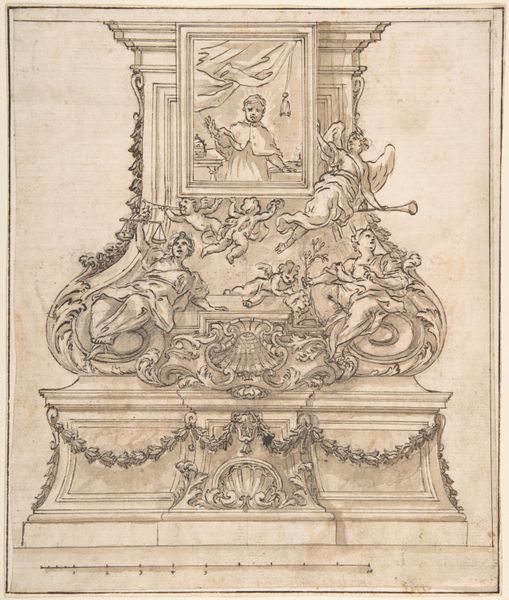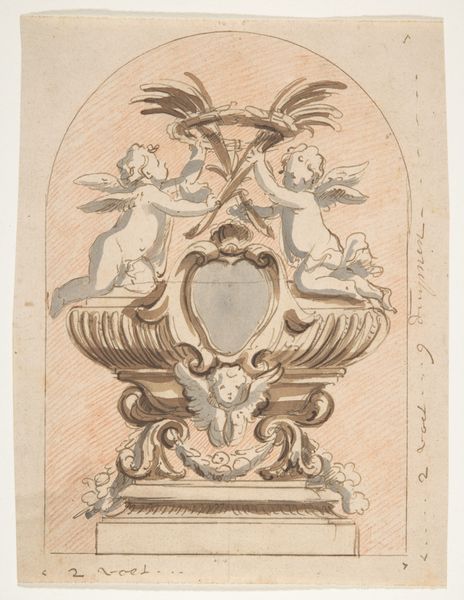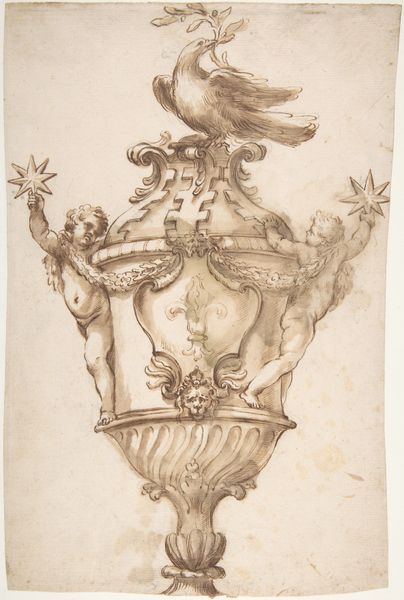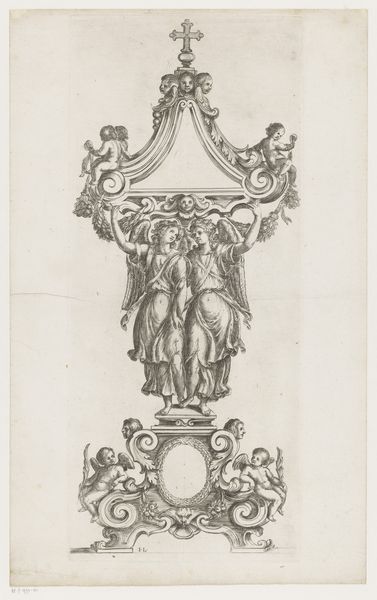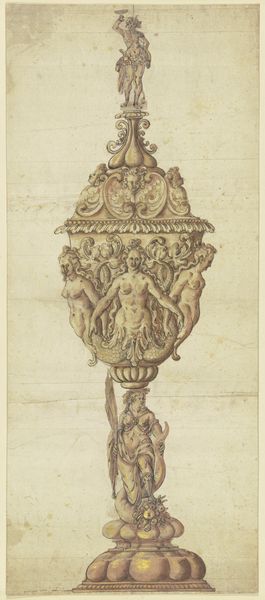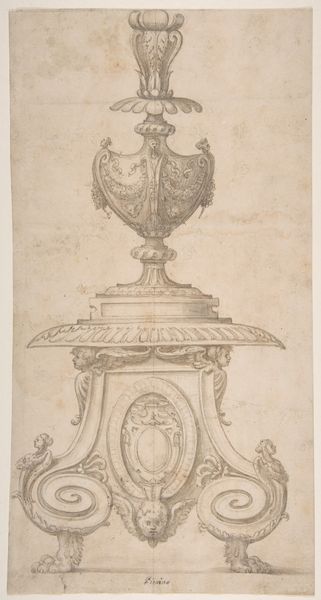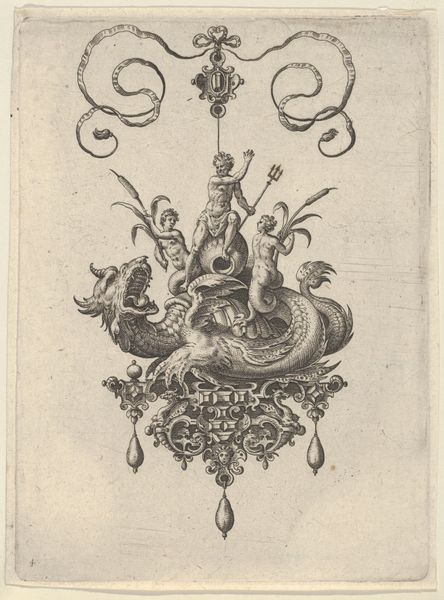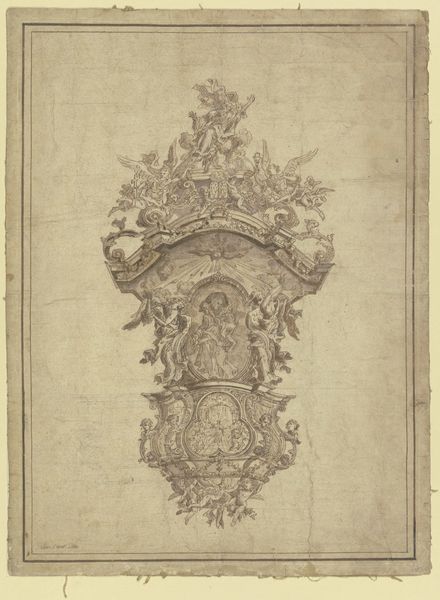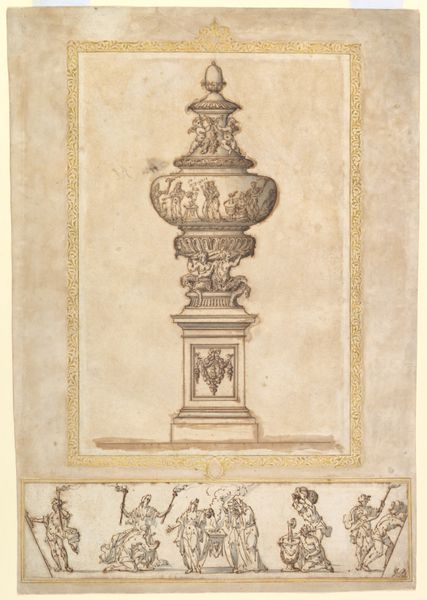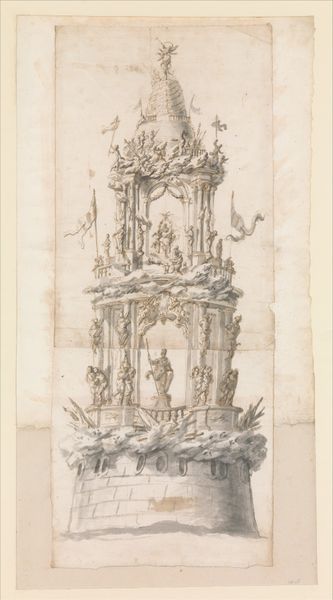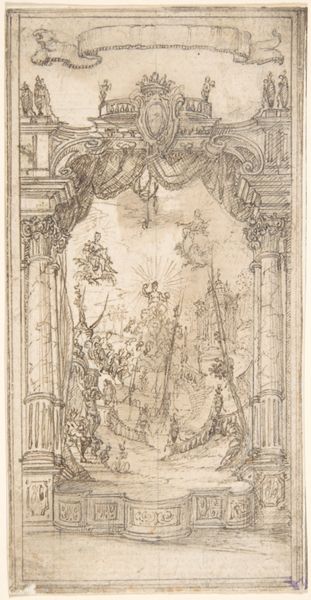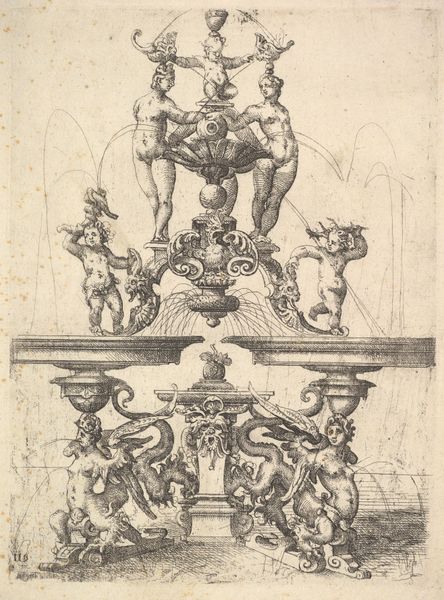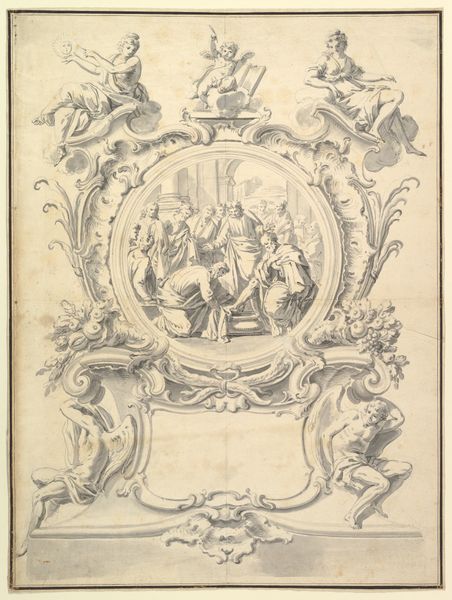
Design for a Vessel with Two Tritons Blowing Horns and a Winged Putto on Top 1652 - 1725
0:00
0:00
drawing, print, paper, ink
#
drawing
#
allegory
#
baroque
# print
#
figuration
#
paper
#
ink
Dimensions: sheet: 7 1/4 x 5 9/16 in. (18.4 x 14.2 cm)
Copyright: Public Domain
Giovanni Battista Foggini sketched this vessel with pen and brown ink in the late 17th to early 18th century. Dominating the design are tritons and a putto, blowing horns. These figures are not merely decorative; they are potent symbols of transformation and announce the arrival of something significant. Tritons, the messengers of the sea, evoke the primal power of the ocean, harking back to ancient Greco-Roman myths. We find echoes of these figures in earlier depictions of sea gods, their horns resonating with the call of the wild. The putto atop the vessel, a cherubic figure, symbolizes innocence and divine love, a motif carried through centuries, from Renaissance paintings to Baroque sculptures. The blowing of horns is a recurring motif across cultures, serving as a call to attention, a signal of change. Think of the horns in Norse mythology, heralding Ragnarok, or the trumpets in Christian iconography, announcing the Apocalypse. These symbols are not static; they evolve, adapt, and resurface, their meanings layered with the collective memories and subconscious fears of humanity.
Comments
No comments
Be the first to comment and join the conversation on the ultimate creative platform.
